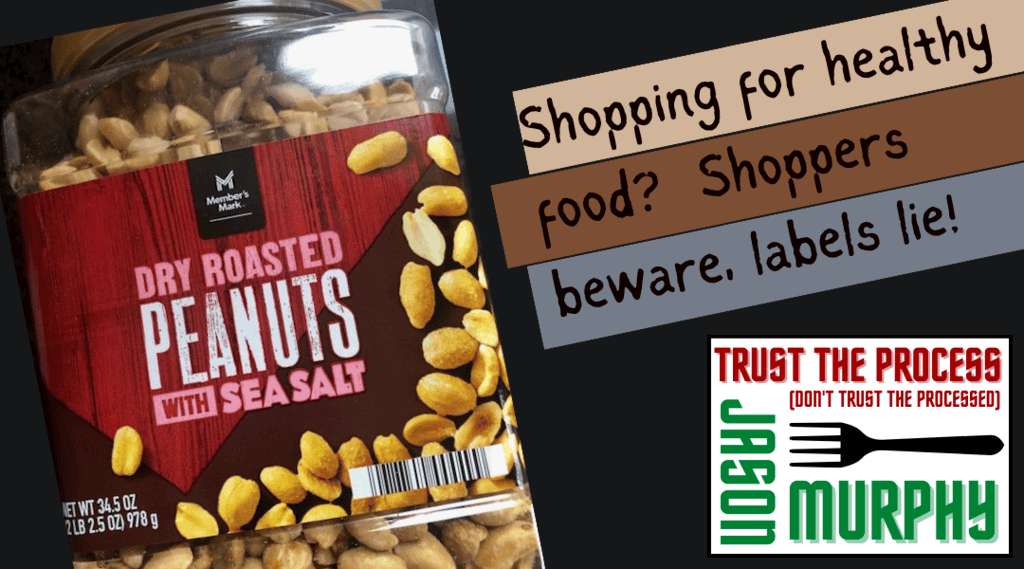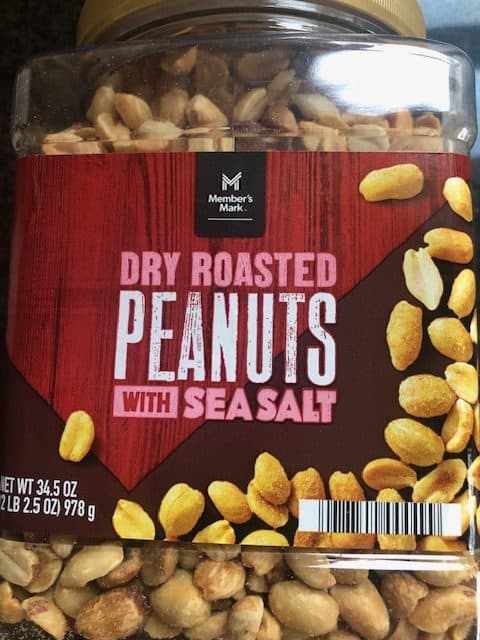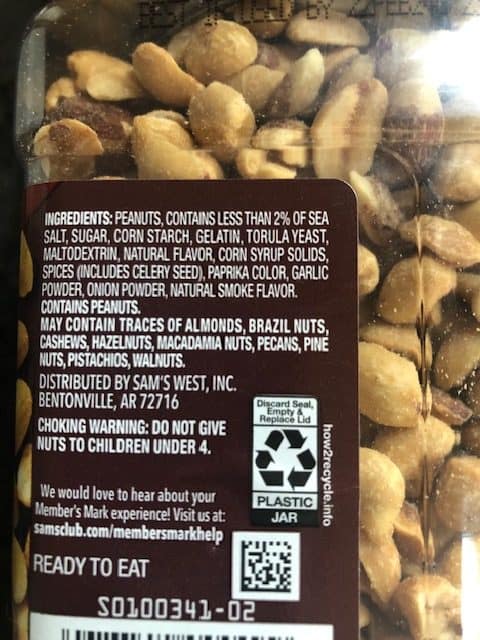If you have been reading this series of articles for any length of time, you know that I alway bring up reading the ingredient list on any packaged food. There is good reason for that. Labels lie. They mislead. They gaslight. They misdirect like a street magician performing a card trick.
The label on the front is the significant other claiming so-and-so is just a friend, but the ingredient list on the back is the surveillance footage from the PI and the text records showing what good “friends” they actually are.
A label may claim to be healthy, natural, organic and cage free, yada yada yada…but the ingredients list is where the cold, hard truth resides. Even as vigilant as I am, I fall victim to misleading labels still to this day.
Last week, I was rushing through Sam’s Club picking up some items. I was pressed for time and flying through the store as I grabbed standard items that I no longer have to check. I made one crucial mistake.
I buy my nuts in bulk since they make up such a big part of my diet, but I have never bought peanuts from Sam’s. As I was rushed around at about five times the speed of the average Sam’s shopper, I spotted this:
Reading that, what would you think was in this container? If you are like me, peanuts that were dry roasted with sea salt. For that you need three things: peanuts, sea salt, and heat. That’s it. Nothing else is needed or required, thank you very much.
Once home, I cracked open the seal and could immediately smell that I had been deceived. The aroma of sugar hit my olfactory nerve, along with other mystery ingredients as well. I could also see that the texture was wrong.
It was bumpy and coarse, not smooth like a peanut should be. I picked up one solitary tiny peanut half and ate it. It was very sweet. Peanuts should only taste sweet if you are eating a Snickers bar. Just one half of one peanut was so sweet, I needed a drink of water to wash away the taste. I already knew what I was going to find when I flipped the container over to read the ingredients:
As you can see, there is much more going on here than just peanuts, sea salt, and heat. You can also see why it was so over-sweet, as sugar is listed as the second and the fourth ingredient. They call it maltodextrin in the fourth position, which is just any kind of vegetable starch that has been highly processed and broken down into a sugar powder by means of hydrolysis.
Maltodextrin has an even higher glycemic index than table sugar, so if a diabetic person were to eat a handful of these nuts thinking it was just that…nuts, they would be in for a very bad time. A blood sugar spike would be happening when they least expected it. A label doesn’t have to state actual lies to be a lying liar. Omitting truths is just as effective in the lying process.
So now I have a ten dollar bucket of processed sugars that even the squirrels won’t touch because their noses work just as well as mine. It’s too bad, because peanuts left to be their true selves are packed with protein, vitamins, fiber, and low on simple carbs.
It’s not just peanuts that have misleading labels or added sugars or worse snuck into them. Everything from bacon, cheese, so called “health” foods…they all can be gaslighting you. Trust no one and no product.
Even if you are in a hurry, if you buy something you haven’t already bought several times before, stop and read the label. It can save you from wasting your money on a product you will never eat, or in the case of someone with a health issue like diabetes, it can stop a dangerous situation from happening.
So be careful out there, take your time, and do your required reading. It’s for more than just book reports. It can be for your health.
See the list of all the Shirtless Chef recipes at www.mysaline.com/shirtless.





